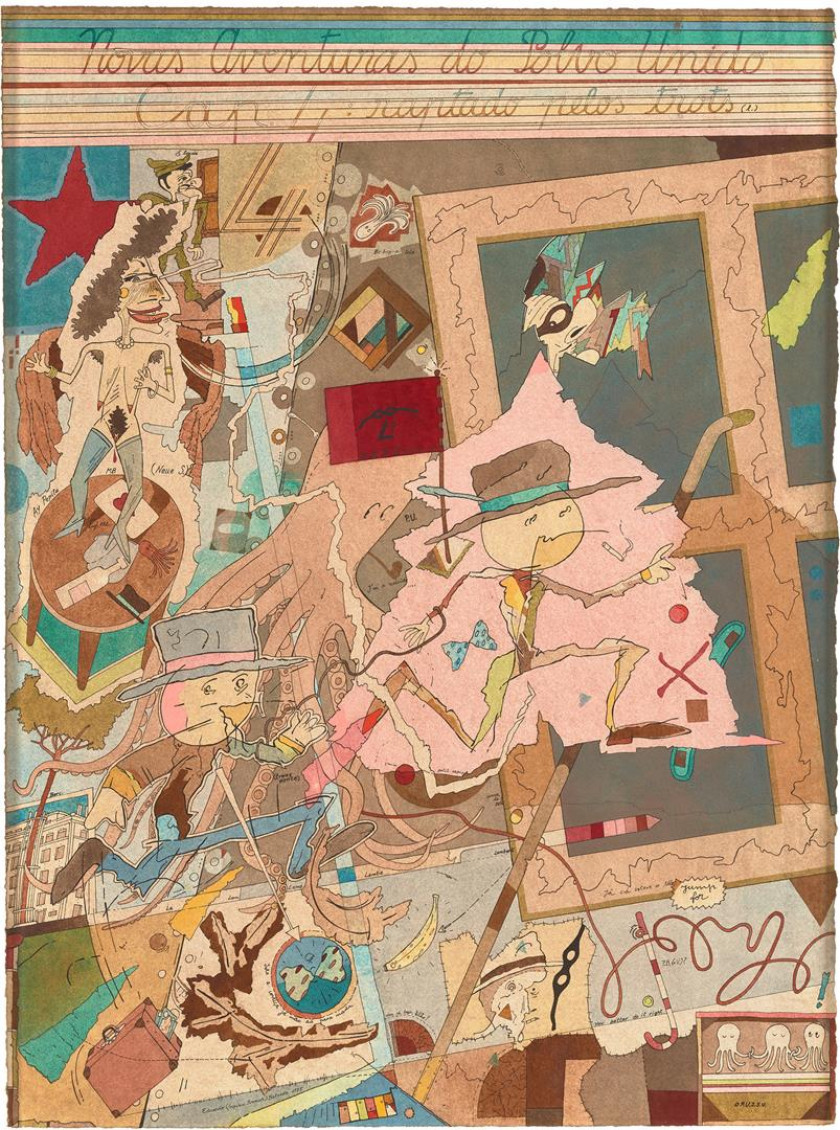Detail
other
![Detail [Detalhe]](https://cms.macam.pt/storage/uploads/thumbs/inarte-work-3968_w840.jpg)
![Detail [Detalhe]](https://cms.macam.pt/storage/uploads/thumbs/inarte-work-3968_w840.jpg)
1972
Watercolour and Indian ink on paper
42 x 56,5 cm
Eduardo Batarda begins his career in the 1960s, as part of a generation for whom British and North American references will prevail. He was in London between 1971 and 1974 on a Calouste Gulbenkian Foundation scholarship, and his work reveals similarities with the new figuration, English pop art, and classic comic strips, in an ironic commentary on the political and artistic scene.
Created during these years of apprenticeship in London, Batarda structures the composition of Detail in three horizontal zones, which are, in turn, divided vertically. On this grid pattern reminiscent of the comic strip compositional scheme, Batarda arranges his figures and objects, more or less identifiable, with a subtle and sarcastic humour: not innocuous, but indeed ferocious and corrosive. The composition is dominated by the two central figures: the figure in the green cap, in a higher plane, wide-eyed, wielding a revolver, while seemingly caught by the surprise of a fall, being penetrated by the figure in an apparent lower plane; the latter stares at the spectator with his gaze and wide, malicious smile, in apparent satisfaction of a rematch. Pointing to a possible identification of the character, there are the boots, beard and a keffieyeh, the traditional scarf worn by Middle Eastern men. Supporting this interpretative direction there is a little detail in black on the left side of the composition: a small desert landscape. The main figure seems caught by a surprise attack, not only by the penetration, but by the bullets flying towards her and the blood splashing between her female legs.
What does Batarda refer to in the main scene? To the Arab-Israeli conflict? We remain in this ambiguity, but Batarda counts on our complicity to read the reworked conventionality of the signs and thus gradually unveil his work.
Luísa Cunha
